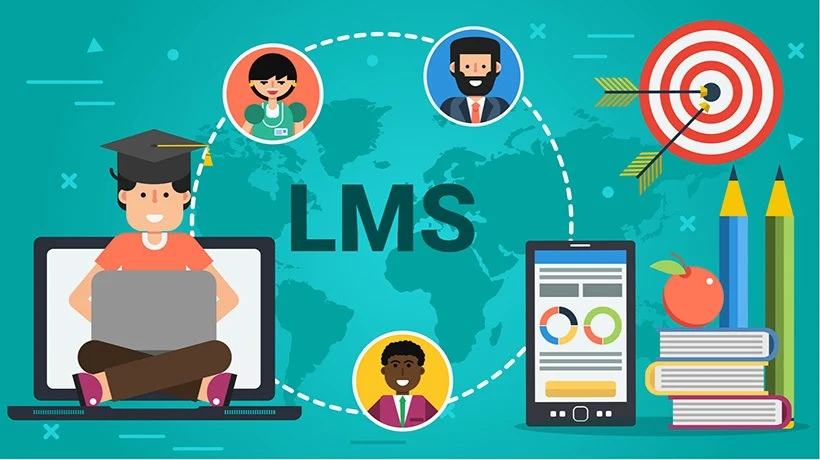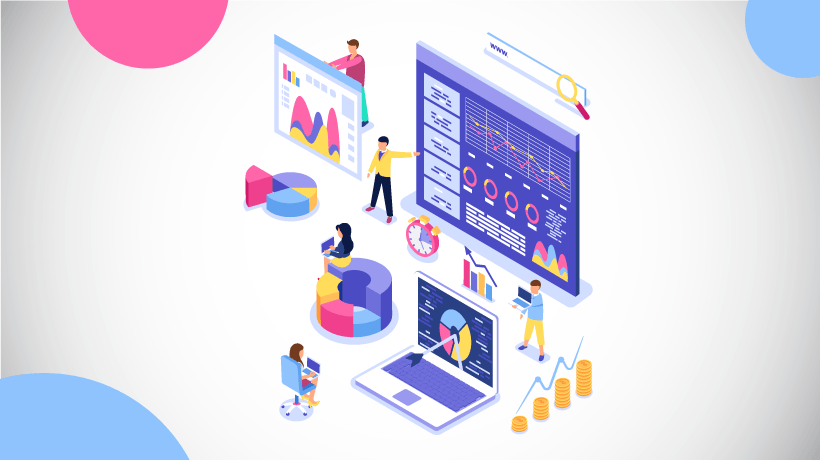E-Learning Software Development Company
In today's fast-paced world of online education, the demand for e-learning software development companies has skyrocketed. As more and more people are turning towards online learning, educational institutions and businesses need to keep up with the modern era of education. E-learning software is an innovative way to make learning accessible to all, regardless of time and location constraints. This blog post will take you on a journey through the different types of e-learning software available in the market, its pros and cons, features of good e-learning software, how to choose the right e-learning software development company, and much more! So buckle up as we explore everything related to e-learning software development!
E-learning software is an innovative way to make learning accessible to all, regardless of time and location constraints. This blog post will take you on a journey through the different types of e-learning software available in the market, its pros and cons, features of good e-learning software, how to choose the right e-learning software development company, and much more! So buckle up as we explore everything related to e-learning software development!
What is E-Learning?
E-learning, also known as electronic learning or online education, is a modern form of education that utilizes digital technology to deliver educational content. It refers to any type of learning that takes place through electronic devices such as computers, tablets and smartphones. E-learning can take many forms including self-paced courses, live webinars, virtual classrooms and interactive games. The main advantage of e-learning is its flexibility which allows students to learn at their own pace and according to their own schedule. This makes it an ideal option for working professionals who cannot attend traditional classes due to time constraints. Another major benefit of e-learning is its accessibility regardless of location. Students from anywhere in the world can access the same course material with just an internet connection. However, there are also some challenges associated with e-learning such as lack of face-to-face interaction between teachers and students which can lead to feelings of isolation among learners. E-learning has revolutionized the way we think about education and opened up new possibilities for lifelong learning.
The Different Types of E-Learning Software
The e-learning industry has come a long way, and so has the technology that powers it. There are several types of e-learning software available in the market today. Each type of education software serves different purposes and caters to specific audiences. Firstly, there is Learning Management System (LMS) software. It allows you to manage learning content, track progress and generate reports on learners' performance. Secondly, there is Authoring Tool Software which enables educators or developers to create interactive online courses with multimedia elements. The third type of e-learning software is Virtual Classroom Software which provides live streaming video lectures coupled with whiteboard tools for collaboration between teachers and students. Fourthly, Content Curation Software helps design customized courses by allowing educators to collect information from various sources such as videos, blogs or articles. Game-based Learning Software uses gamification techniques like leaderboards or rewards systems to make learning engaging for children. These are just some examples - there are many more types of e-learning software out there catering for various industries and use cases!
Are there ready e-learning platforms and elearning solutions?
Yes, there are numerous ready-to-use e-learning platforms and solutions available in the market. These platforms cater to various educational needs, such as online courses, corporate training, corporate learning, and self-paced learning. Some popular e-learning platforms solutions and management systems include:- Moodle (https://moodle.org/): An open-source learning management system (LMS) that provides customizable features to create and manage online courses.
- Blackboard (https://www.blackboard.com/): A popular LMS used by educational institutions and businesses for course management, content delivery, and online collaboration.
- Canvas (https://www.instructure.com/canvas/): A modern, cloud-based LMS used by K-12 schools, colleges, and universities to deliver course content and facilitate communication between students and teachers.
- Google Classroom (https://classroom.google.com/): A free, web-based platform for schools and educators that integrates Google Apps for Education to streamline the process of sharing files and managing assignments.
- Teachable (https://teachable.com/): An online platform that allows individuals and businesses to create and sell their own courses with ease.
- Udemy (https://www.udemy.com/): A marketplace for learning and teaching online, offering thousands of courses on various topics, such as programming, design, and business.
- Coursera (https://www.coursera.org/): An online learning platform offering courses, specializations, and degree programs from top universities and institutions.
- TalentLMS (https://www.talentlms.com/): A cloud-based LMS platform designed for businesses to create and deliver online training programs.
- Adobe Captivate Prime (https://www.adobe.com/products/captivateprime.html): A comprehensive LMS from Adobe that focuses on providing personalized learning experiences for learners.
- Thinkific (https://www.thinkific.com/): A platform that allows businesses and entrepreneurs to create, market, and sell their own online courses.
These educational platforms, and solutions cater to different needs, budgets, and levels of expertise, so it's essential to evaluate your specific requirements and objectives before choosing an e-learning platform.

Pros and Cons of E-Learning Software
E-Learning software has become a popular way of learning for many individuals and organizations worldwide. However, like any other technology, it comes with its own set of advantages and disadvantages. One significant benefit of e-learning software is that it provides flexibility in terms of scheduling. Learners can access courses at their convenience, allowing them to balance work or family responsibilities while still pursuing education. Another advantage is the ability to learn at your own pace. Unlike traditional classroom settings where students must keep up with the instructor's pace, e-learning allows learners to take their time on difficult topics or move faster through easier ones. Additionally, e-learning software often saves money compared to traditional classroom-based training since there are no physical classrooms required, which means lower overhead costs like rent and utilities. On the downside of educational process, some people may find it difficult to stay motivated without face-to-face interaction with instructors or peers. Also, technical issues such as slow internet speeds or computer problems could disrupt the learning process. Moreover, some critics argue that online courses lack rigor compared to traditional classes due to potential cheating by using outside resources during assessments. Though- despite these concerns- the benefits of e-learning far outweigh its disadvantages making it an increasingly popular mode of learning for individuals and organizations alike.What are the features of good E-Learning Software?
Good e-learning software should be designed to meet the needs of learners and instructors. It must offer a range of features that can enhance teaching and learning experiences. One crucial feature is flexibility, which allows students to learn at their own pace, place and time. This means they can access course material from any device or location with an internet connection. Another important feature is interactivity, where learners get feedback on their progress through quizzes, assessments and other interactive activities. As well as being engaging, e-learning software should also have clear navigation so that users can easily locate content quickly. This includes search functions, menus and easy-to-use dashboards. Collaboration tools are another key attribute where learners can work together online in real-time or asynchronously through discussion forums, group chats or video conferencing. Good e-learning software should allow for customization using machine learning, so it can be tailored to the specific needs of individual users. This includes personalized learning paths based on learner preferences or adaptive algorithms that adjust to suit different learning stylesHow to choose the right Elearning Development Company
Choosing the right e-learning software development company can be a daunting task. With so many options available, it's easy to get overwhelmed and make the wrong decision. Here are some tips to help you choose the right e-learning software development company for your needs. First, consider their experience in creating e-learning solutions. Education software development company usually has successful projects and software solutions in their portfolio. Look at their portfolio and see if they have worked on projects similar to yours. This will give you an idea of their expertise and what they can deliver. Secondly, check their reputation in the industry by reading client reviews or testimonials. Positive feedback from previous clients is a good sign that they are reliable and capable of delivering quality work. Thirdly, evaluate the company's communication skills and responsiveness. It's important to have open lines of communication throughout the project for transparency and updates on progress. Fourthly, look at pricing models carefully as some companies may provide fixed prices while others offer hourly rates which could affect your budget plan negatively. Ensure that they use up-to-date technology stacks with modern programming languages such as JavaScript frameworks like React.js or Angular.js which will increase speed during development time thereby optimizing cost management efficiently.
How much does building custom e learning solutions might cost?
The cost of building custom e-learning solutions can vary significantly depending on the complexity, features, content development, and technology used. Here are some factors that can impact the cost of creating custom e-learning solutions:- Project scope: The complexity and size of the e-learning project will directly affect the cost. Larger projects with more courses or modules, interactive elements, and multimedia will generally require more resources and a higher budget.
- Content development: Creating high-quality content for e-learning courses can be time-consuming and costly. The cost will depend on whether you're creating content in-house or outsourcing it, as well as the level of expertise required for the subject matter.
- Instructional design: Designing effective e-learning experiences requires skilled instructional designers who can plan the learning objectives, structure, and assessment methods. The cost of hiring instructional designers or outsourcing instructional design services can add to the overall budget.
- Platform development: If you're building a custom e-learning platform from scratch, the cost of development can be significant. This includes the expense of hiring developers, designers, and other specialists, as well as purchasing licenses for any required software or technology.
- Integration: Integrating your custom e-learning solution with existing systems (such as an LMS or CRM) or third-party tools can add to the cost, depending on the complexity of the integration process.
- Maintenance and support: Ongoing maintenance and support costs should also be factored into the budget, as regular updates and fixes may be required to ensure the solution remains functional and secure.
Given the numerous factors involved, it is challenging to provide a specific cost estimate for building custom e-learning solutions. However, you could expect costs to range from a few thousand dollars for smaller, simpler projects to several hundred thousand dollars for complex, enterprise-scale solutions. It is crucial to carefully assess your organization's needs, budget, and long-term goals when considering investing in a custom e-learning solution.
